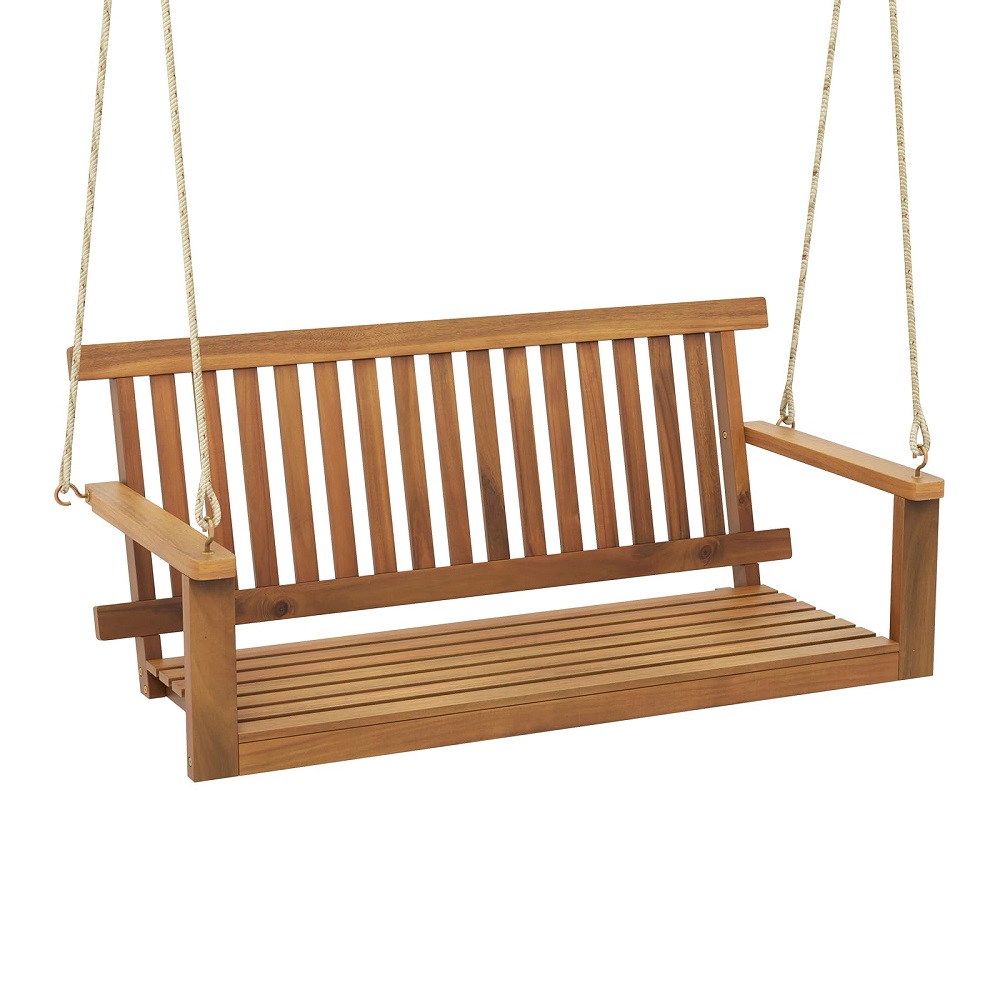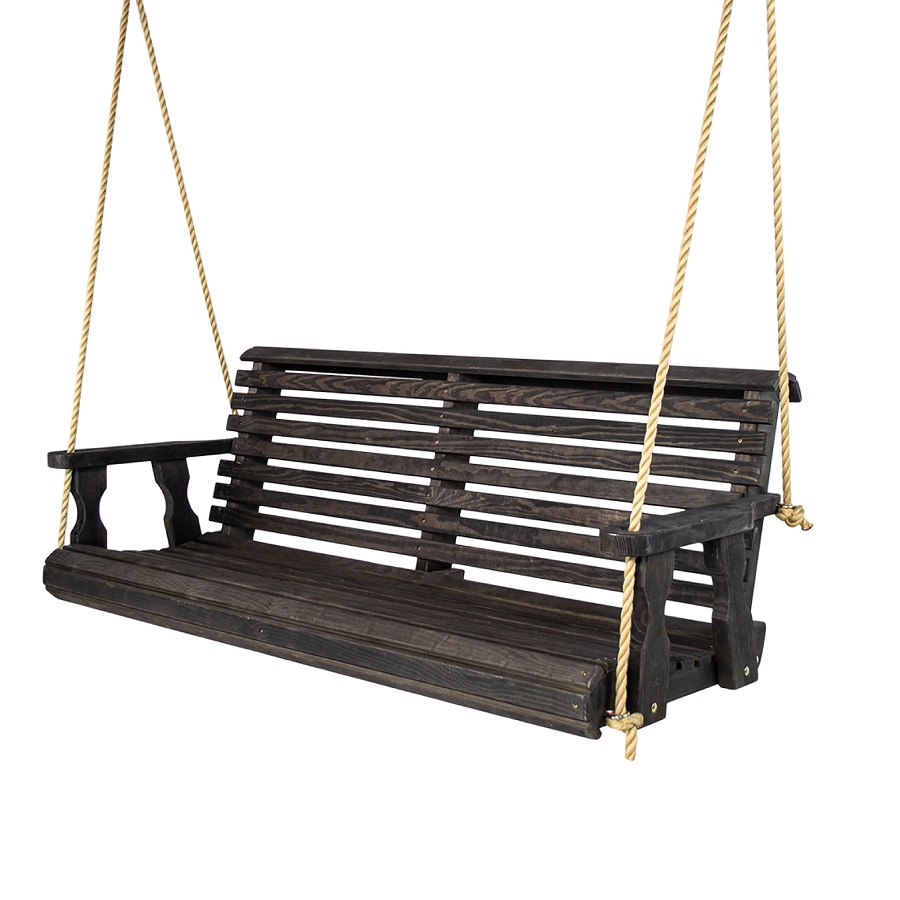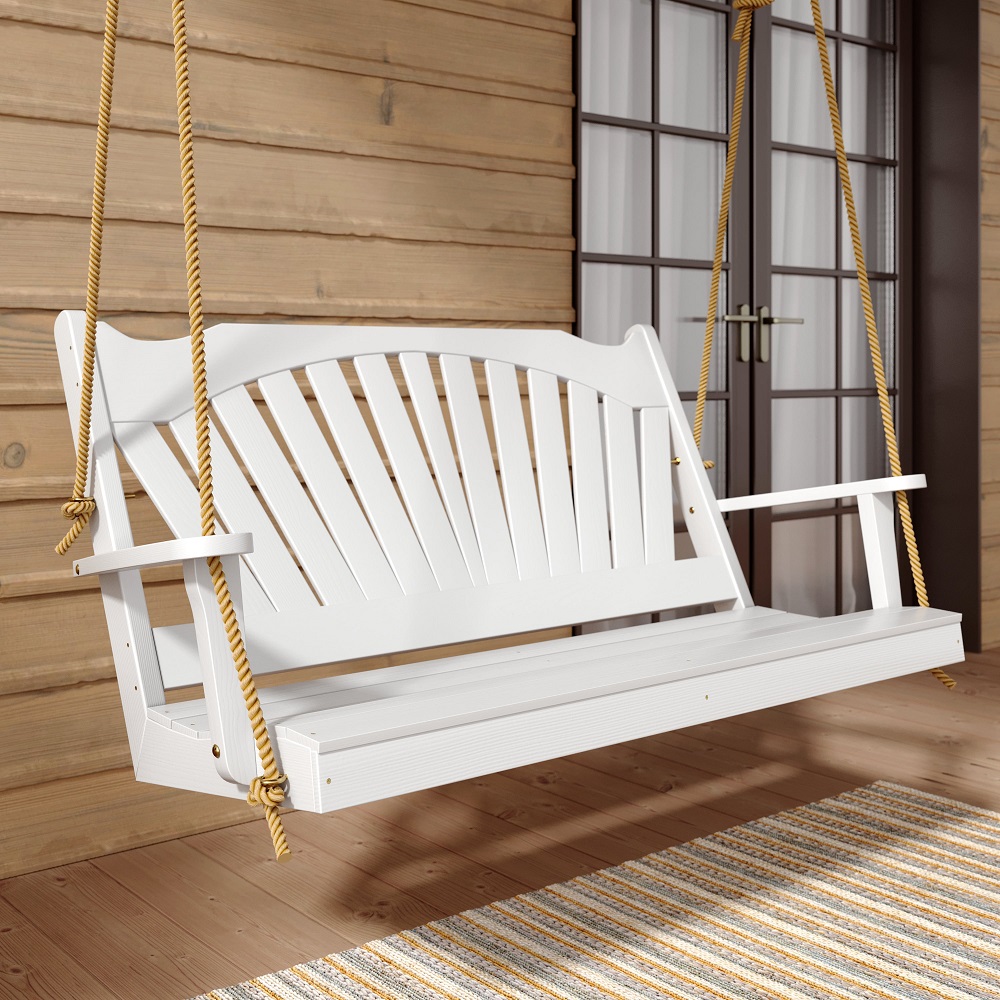Hanging a porch swing can transform your outdoor space into a cozy retreat, allowing you to relax and enjoy the gentle sway of the swing while soaking in the fresh air. However, many homeowners might feel intimidated by the task. In this guide, we will walk you through mastering the art of hanging a porch swing with rope, ensuring that you can do it easily and safely.
Understanding the Basics of a Porch Swing
What is a Porch Swing?
A porch swing is a type of seating that is suspended from a frame or ceiling, allowing it to swing back and forth. It is often made from wood, metal, or a combination of both, and is typically designed for outdoor use. The gentle rocking motion of the swing provides a soothing movement that can enhance relaxation, making it a popular choice for porches, patios, and decks.
Benefits of Installing a Porch Swing
Porch swings do more than just provide a place to sit. They enhance the aesthetics of your outdoor space, create a cozy atmosphere, and offer a playful element to the environment. Additionally, swings can be a gathering spot for friends and family, encouraging conversation and relaxation. The benefits of a porch swing extend beyond just its functional use; it can also be a focal point of your outdoor décor, bringing charm and elegance to your home.

Selecting the Right Swing and Rope
Choosing the Perfect Porch Swing
Before jumping into the installation process, it’s essential to choose the right swing. Consider the size of your porch, the material of the swing, and the style that complements your home’s architecture. Swings come in various designs from classic wooden swings to modern metal options. Ensure that the swing can support the weight of the expected users and adhere to local safety standards.
Selecting Appropriate Rope for Suspension
The type of rope you use for hanging your porch swing is crucial for safety and durability. Look for strong materials such as nylon or polypropylene, which can withstand outdoor weather conditions. Avoid cheap ropes that might fray or wear over time. A good rule of thumb is to select a rope that can hold at least three times the total weight of the swing and its occupants. Check for any fraying, knots, or signs of wear before installation to ensure safety.
Tools and Materials Needed
Essential Tools for Hanging a Porch Swing
Before beginning the installation process, gather all the necessary tools to make your task easier. You will need a drill, a level, measuring tape, a ladder, and a pair of heavy-duty scissors or a knife for cutting the rope. A wrench might also be needed if you are using chain fittings. Having all your tools ready will streamline the process and reduce the likelihood of interruptions.
Needed Materials for the Project
Aside from the swing and rope, you will require various materials for proper hanging. This may include eye bolts, a swing hang kit, or S-hooks, depending on your installation method. Additional materials might include washers and nuts for securing bolts. Always confirm that your materials are suitable for the weight and type of swing you have chosen.

Preparing the Installation Site
Choosing the Right Location for Your Swing
Selecting the perfect location for your porch swing is essential for both usability and safety. Look for a spot with ample clearance to ensure that the swing can move freely without hitting railings, walls, or other obstacles. Consider factors such as sunlight, shade, and visibility from inside the house. A location that encourages relaxation, such as facing a garden or scenic view, will enhance your experience.
Measuring for Accuracy
Accurate measurements will ensure that your swing hangs at the correct height and in the perfect position. Use your measuring tape to determine the distance from the ceiling or beam to the desired swing height. Ideally, your swing should be about 18 inches off the ground to allow for comfortable seating and legroom. Double-check your measurements before proceeding to avoid any mistakes that could lead to an unsafe or uncomfortable position.
Installing the Swing: Step-by-Step Guide
Step 1: Securing the Support Structure
Before hanging the swing, ensure that the support structure, whether it is a beam, ceiling joist, or swing frame, is sturdy and can support the swing’s weight. Use a stud finder to locate the center of the beam and mark it clearly. If your swing will hang from the porch ceiling, ensure there are no electrical wires or plumbing that could interfere with your installation.
Step 2: Attaching the Eye Bolts
Drill holes into the marked points on the support structure, ensuring they are deep enough to hold the eye bolts securely. Insert the eye bolts and secure them with washers and nuts, tightening them adequately to avoid any movement. Make sure they are installed straight and level, as this will ensure that your swing hangs evenly.
Step 3: Cutting and Attaching the Rope
Measure the length of the rope needed to hang the swing securely. When cutting the rope, allow extra length for knots and adjustments. Attach the rope to the eye bolts by threading it through each eye and tying a secure knot. A bowline knot is a good choice, as it provides a strong and stable hold. Repeat this process for both sides to ensure balance and safety.
Ensuring Safety and Stability
Testing the Swing Before Use
Once the swing is hung, it’s vital to conduct a thorough inspection to ensure that it is safe for use. Carefully test the swing by applying gentle pressure to see how it holds up. Gradually increase the weight by adding heavier objects or asking a friend to sit on the swing while you supervise. Check that the ropes are intact and that there is no movement at the eye bolts.
Maintenance Tips for Longevity
To prolong the life of your porch swing and ensure safety, follow a few maintenance tips. Regularly inspect the swing’s ropes and connections for any signs of wear and tear. Clean the swing and treat the wood with a suitable weather-resistant sealant if applicable. Store the swing or move cushions indoors during extreme weather conditions to protect material integrity.

Enjoying Your Porch Swing
Personalizing Your Space
Once your porch swing is securely installed, it’s time to personalize your space to enhance your enjoyment. Consider adding cushions and blankets for comfort, and decorate the surrounding area with potted plants or outdoor rugs for a more inviting atmosphere. String lights or lanterns can provide an enchanting ambiance for evening relaxation.
Tips for Enhancing Your Swinging Experience
For an even more enjoyable experience, set up side tables for snacks and drinks, or install hooks for hanging accessories like magazines and books. Creating a small nook around your porch swing with rope can encourage you to spend more time enjoying your outdoor space, whether reading, chatting, or simply enjoying nature.
Conclusion
Hanging a porch swing with rope may seem daunting at first, but with careful planning and execution, it can be a straightforward and rewarding project. By following these steps, you can create a comfortable, safe retreat in your own backyard. Embrace the art of swinging into relaxation, and enjoy the transformative effect a porch swing can bring to your home. With the right tools, materials, and a bit of creativity, your outdoor space can become a beautifully inviting sanctuary.
